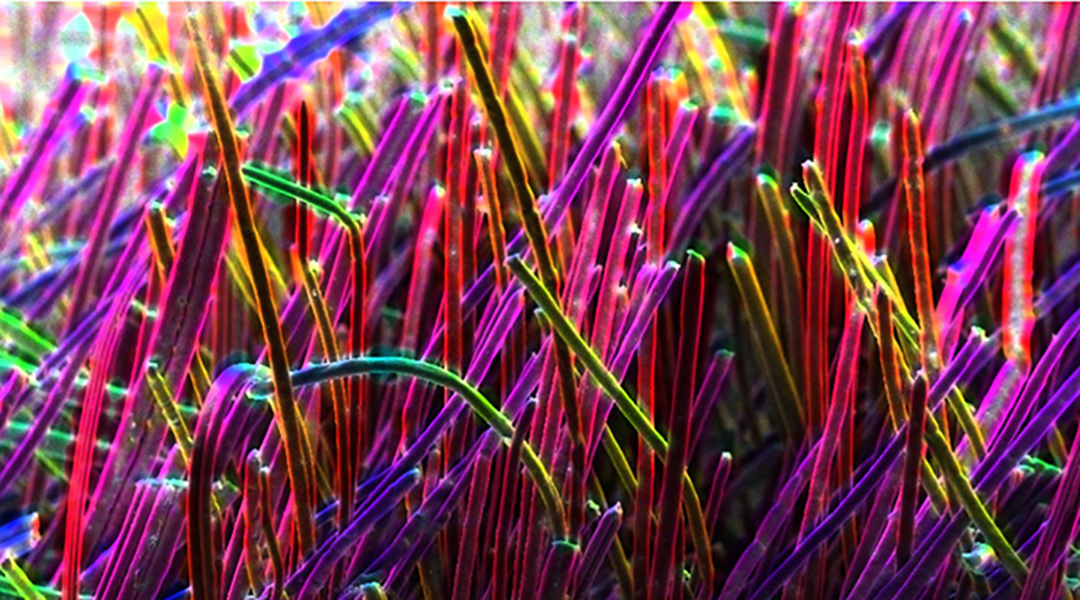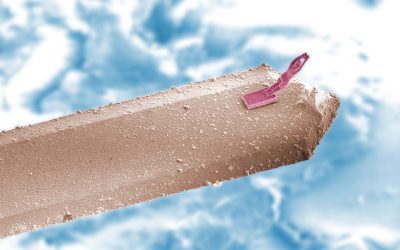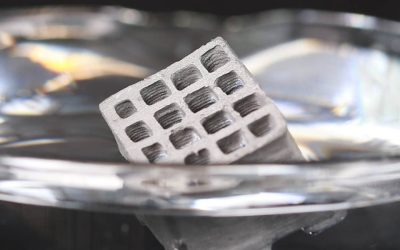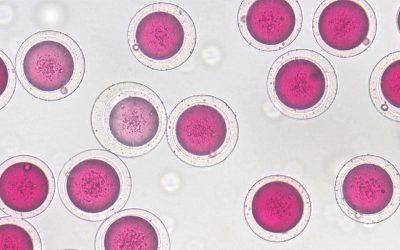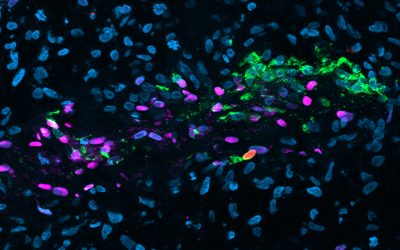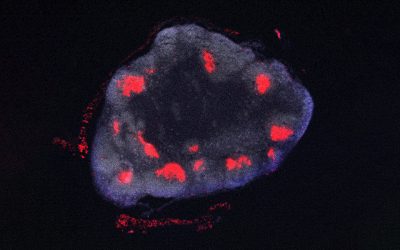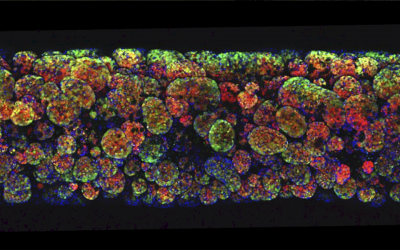Image credit: Jingwei Xie et al.
The distinction between art and science is often not a very useful one. As the team here at Advanced Science News peruse the scientific literature, we are often struck by the beauty of the images presented to support scientific conclusions. Any one of this collection of recently published images would not be out of place in an art gallery or on the living room wall. We hope you enjoy them as much as we do!
A shrubbery? A battery!

Too small to be appreciated by lovers of shrubberies unless they have a scanning electron microscope in their garden shed, these wonderful, almost unbelievable, leaf-like structures are crystals of bimetallic metal–organic frameworks (MOFs), formed with a one-to-one ratio of Cu2+ and Zn2+ cations. These bimetallic MOFs are used as sulfur hosts in sodium–sulfur batteries made by Denis Yu and Andrey Rogach in Advanced Energy Materials. The team at the City University of Hong Kong, together with researchers in China, hope that these MOFs will solve the problem of dissolution of sulfur in this type of battery by offering a stable host for the sulfur, thereby improving the battery’s cycle life.
How programmable is the fish?
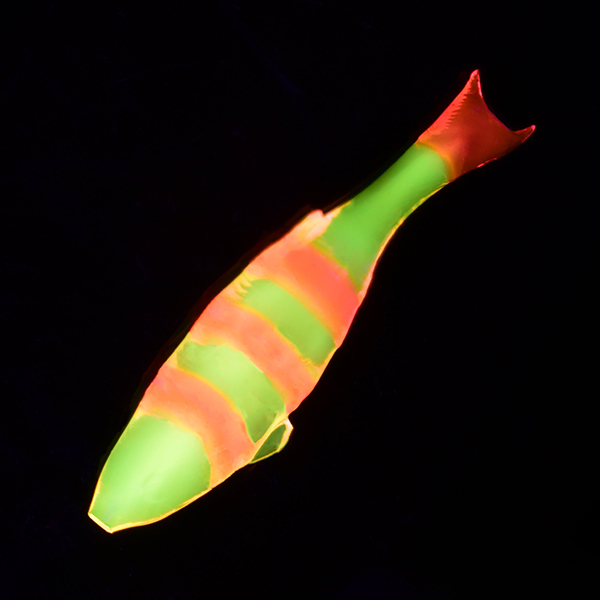
If 3D printing and hydrogel technology had been around in the late 90s, perhaps this question would have been the focus of existential concern for a certain chart-topping Eurodance group from Hamburg: How programmable is the fish? In the real world of 2021, this question was instead asked by Peter Tseng and colleagues at the University of California, Irvine, as they investigated the technique of fluidic infiltration to assemble programmable 3D hydrogels with tunable form and function. One such form was a fish, shown in this image above. Fluidic infiltration refers to the injection of a liquid prepolymer into a 3D-printed mold, yielding a shape-specific hydrogel. Tseng and co-workers’ work in Advanced Functional Materials showcases how modifying the flow rate, volume, and diffusion time during the infiltration step yields hydrogels with different functional properties.
Glowing, self-healing elastomers
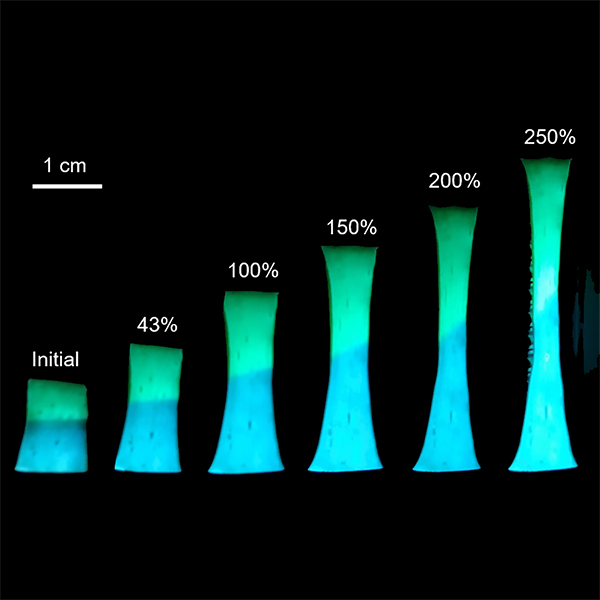
Stretchable, self-healing materials are making waves in electronics. Publishing in Advanced Materials, Xiong Pu and Zhong Lin Wang from the Chinese Academy of Sciences in Beijing have created a state-of-the-art ionic elastomer that overcomes common issues with this type of material, such as liquid leakage or evaporation. Its dynamic cross-linking structure endows it with high conductivity, desired self-healing, stretchability, and transparency with demonstrated application in electroluminescent devices and triboelectric nanogenerator tactile sensors.
There will be blood (vessels)
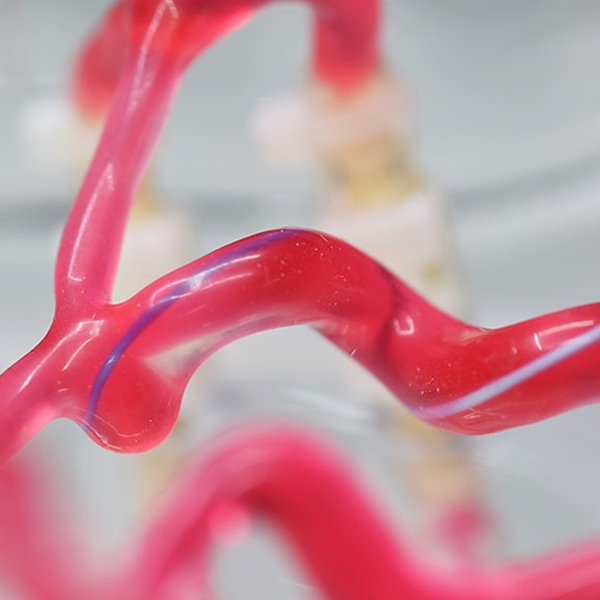
3D replicas of blood vessels are an economic and ethical way to teach medicine and anatomy, but the current production of these analogues is far from perfect. Joonwon Kim and coworkers from Pohang University of Science and Technology in South Korea present a new method for developing realistic artificial blood vessels more efficiently than current methods in Advanced Materials Technologies. Using wax coated molds, the team is able to 3D print artificial blood vessels, creating an intricate and smooth product that dries in 30 seconds.
Tumor treatment taxis
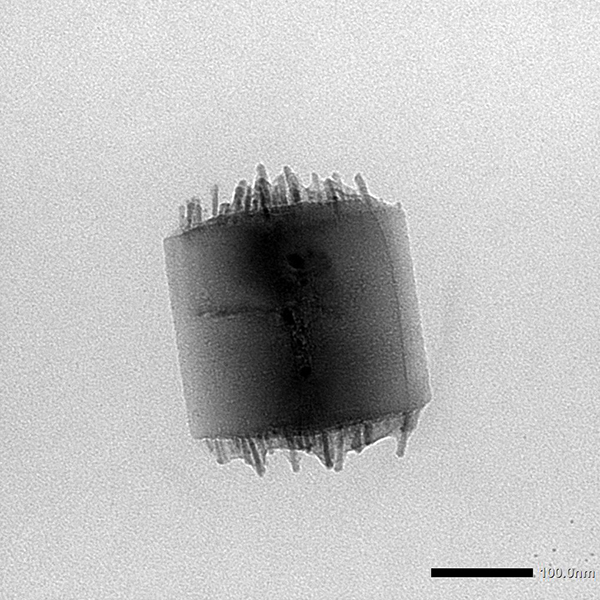
Advances in enzyme research show incredible potential for tumor treatment, which relies on the efficient transportation of proteins to the site of the growth. New research by Xian-Zheng Zhang and colleagues in Small Methods illustrates the development of a protein carrier, called a “nanodrum”, made out of liquid metal. This configuration is an important development as it can hold more volume than previous spherical iterations. The nanodrum delivers the enzyme to a tumor site, where it is activated by the tumor’s acidic environment and produces hydroxyl radicals to kill the cancerous cells.
A luminescent ionogel pushed to its limits
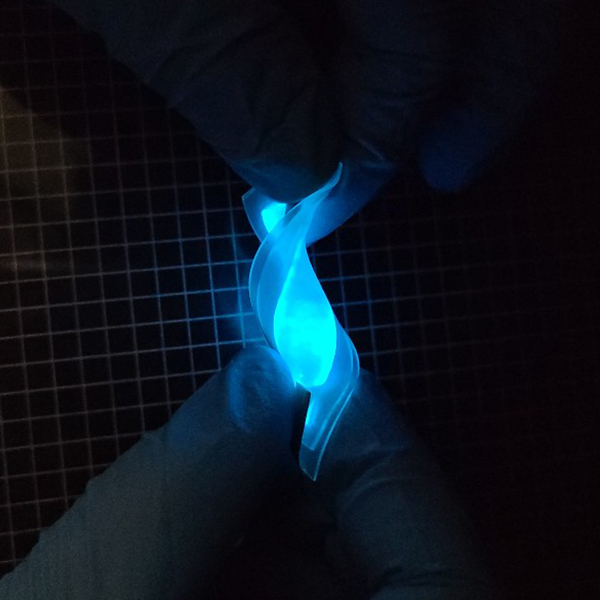
With the aim of developing the next generation of flexible and deformable lighting displays and wearable devices, Sung-Ho Jin and Jinhwan Yoon of Pusan National University, Korea sought to create stretchable yet durable materials using an innovative new ionogel — a composite material made from an ionic liquid immobilized by a polymer matrix. In their study, published in Advanced Materials, they created an extremely stretchable alternating-current electroluminescent device (shown above), which maintained its luminescence even when stretched to its limits.
Flocking colors
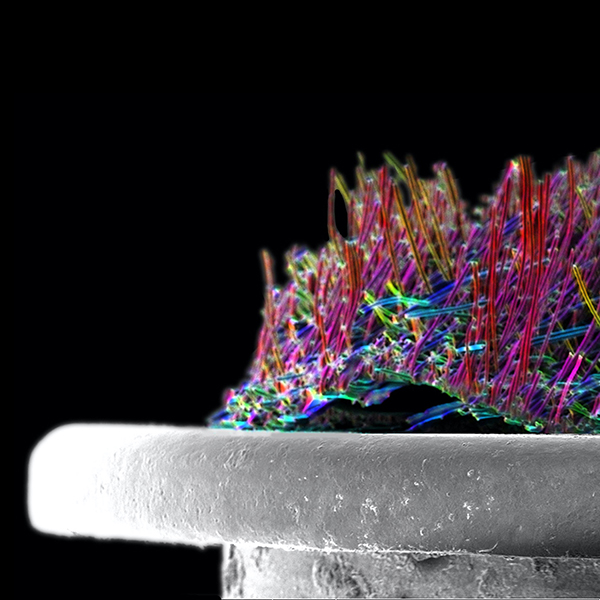
Flocking is what groups of birds do when in flight, leading to beautiful and complex airborne dances in the skies. In textile engineering, however, flocking is the process of adhering microfibers onto a surface, leaving behind a forest of aligned fibers on the textile. This gorgeous array of colorful microfibers (just a couple of hundred micrometers in length) is the work of Jingwei Xie and colleagues at the University of Nebraska. But Xie isn’t a couturier looking to spruce up his and his colleagues’ lab coats; his team are innovating implant technology for healthcare purposes. Publishing in Advanced Healthcare Materials, the team used biodegradable microfibers which were flocked onto the surface of implants, such as medical meshes, to act as scaffolds for successful cell adhesion and regeneration. In vitro and in vivo studies showed promising results as scaffolds for tissue engineering, as well as showing antibacterial properties against methicillin-resistant Staphylococcus aureus.
Nanoscale fireworks
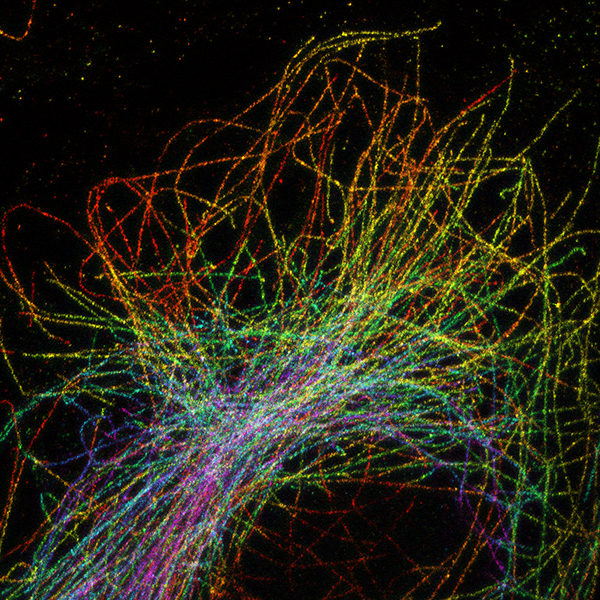
Visualizing cell components with high resolution is a serious challenge. Attaching fluorescent materials to cell components is one common way to deal with this, however, these dyes can be prone to degradation. In Advanced Materials, Changfeng Wu and team develop resilient polymer dots that can be readily attached to cellular components and aid visualization using expansion microscopy. The image above shows microtubules labelled with a range of different multi-colored polymer dots.
This is not a scene from Tron

Thanks to their interesting optical properties, there is a wide body of research which has looked at how to convert micro multiple quantum well (MQW) III-nitride diodes into next generation screen displays. But these diodes aren’t just a one trick pony. Theoretically, they can detect light as well as emit it. In Advanced Materials Technologies, Xiangyang Ji, Yongjin Wang and team experimentally confirm this possibility, opening the door to the use of these diodes in multifunctional displays.
3D cell cultures
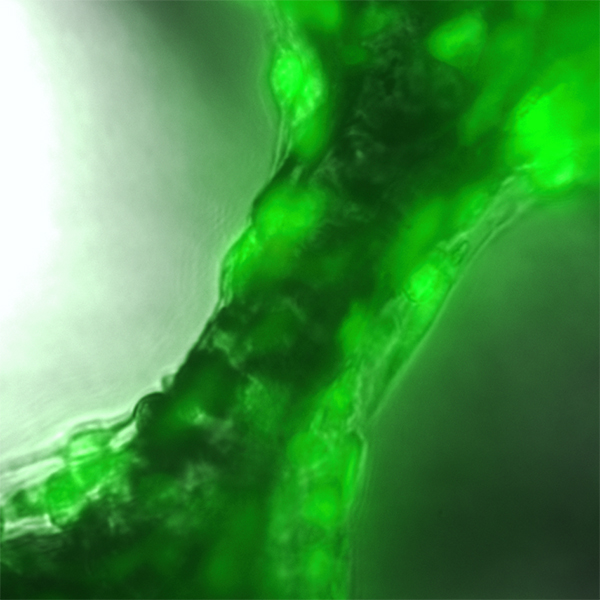
Cells, in their natural environment, exist in 3D arrangements, which are difficult to replicate in the lab. In a study in Advanced Science, Yan-Ling Liu, Wei-Hua Huang, and their teams sought to develop a stretchable and biomimetic 3D scaffold with electrochemical sensing performance to better mimic these biological microenvironments. The structure was fabricated by attaching networks of peptide-linked gold nanotubes on porous polydimethylsiloxane.
See more in this series: Science in pictures

